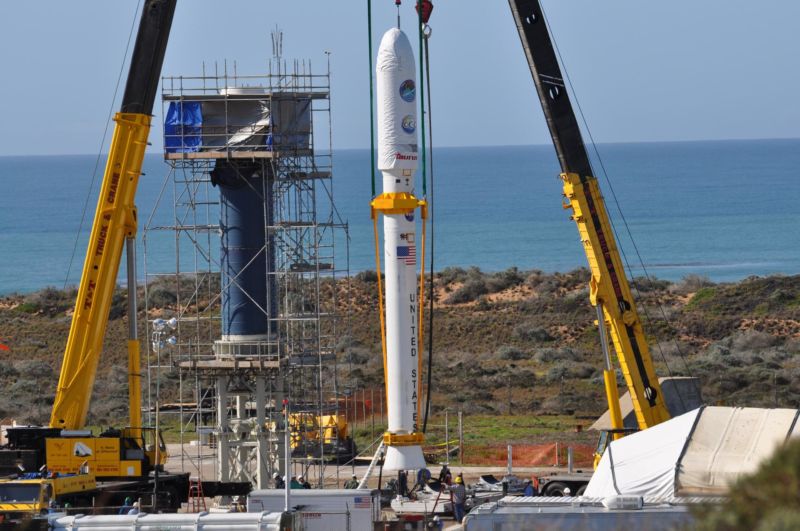
A little more than a decade ago, on February 24, 2009, a Taurus XL rocket launched from Vandenberg Air Force Base in California carrying a NASA satellite designed to measure carbon dioxide levels in the atmosphere. However, the payload never properly separated from the rocket, and due to the extra mass the combined spacecraft and rocket failed to reach orbit.
Two years after this, on March 4, 2011, another Taurus XL rocket launched from Vandenberg, again carrying a science payload for NASA. This Glory satellite would have measured the properties of sulfate and other aerosols in the atmosphere. Again, the payload failed to properly separate from the rocket, and it was a total loss.
Combined, the loss of NASA's Orbiting Carbon Observatory and Glory satellites cost the space agency $700 million. In the years since, the space agency's Launch Services Program and the rocket's manufacturer, Orbital Sciences—which has since been acquired by Northrop Grumman—have been conducting investigations into just what happened.
Over time, some information has come out. Shortly after the launches, it was clear the payload fairing had failed to separate from the two rockets. And in 2015, the company that supplied aluminum extrusions for the four-stage, solid-rocket Taurus XL booster, Sapa Profiles Inc. (SPI), admitted that it had falsified quality control test results for its products.But only now has the story emerged in greater detail. This week, NASA posted a summary of its decade-long investigation into the mission failures. Long story short: faulty aluminum extrusions used in the mechanism by which the payload separates from the rocket, known as a frangible joint, prevented the separation from fully occurring. Much of the report drills down into the process by which NASA reached and then substantiated this conclusion.
The investigation found that SPI had falsified records about the materials used in its extrusions for about a decade. Internal, handwritten accounts of SPI's material properties tests revealed that the company made alterations to more than 2,000 test results between about 1996 and 2006, affecting more than 200 customers.
To protect the government supply chain, SPI has been excluded from government contracting since Sept. 30, 2015. NASA also has proposed debarment for Hydro Extrusion Portland, Inc., formerly known as SPI, and this company also is currently excluded from contracting throughout the federal government.
“Due in large part to the hard work and dedication of many highly motivated people in the NASA Launch Services program, we are able to close out the cause of two extremely disappointing launch vehicle failures and protect the government aerospace supply chain,” said Amanda Mitskevich, LSP program manager at NASA’s Kennedy Space Center in, Florida. “It has taken a long time to get here, involving years of investigation and testing, but as of today, it has been worth every minute, and I am extremely pleased with the entire team’s efforts.”
https://arstechnica.com/science/2019/05/nasa-finally-concludes-investigation-of-two-failed-launches-a-decade-ago/
2019-05-01 14:59:00Z
CBMicWh0dHBzOi8vYXJzdGVjaG5pY2EuY29tL3NjaWVuY2UvMjAxOS8wNS9uYXNhLWZpbmFsbHktY29uY2x1ZGVzLWludmVzdGlnYXRpb24tb2YtdHdvLWZhaWxlZC1sYXVuY2hlcy1hLWRlY2FkZS1hZ28v0gF3aHR0cHM6Ly9hcnN0ZWNobmljYS5jb20vc2NpZW5jZS8yMDE5LzA1L25hc2EtZmluYWxseS1jb25jbHVkZXMtaW52ZXN0aWdhdGlvbi1vZi10d28tZmFpbGVkLWxhdW5jaGVzLWEtZGVjYWRlLWFnby8_YW1wPTE
Bagikan Berita Ini















0 Response to "After a decade, NASA finally reveals root cause of two failed rocket launches - Ars Technica"
Post a Comment